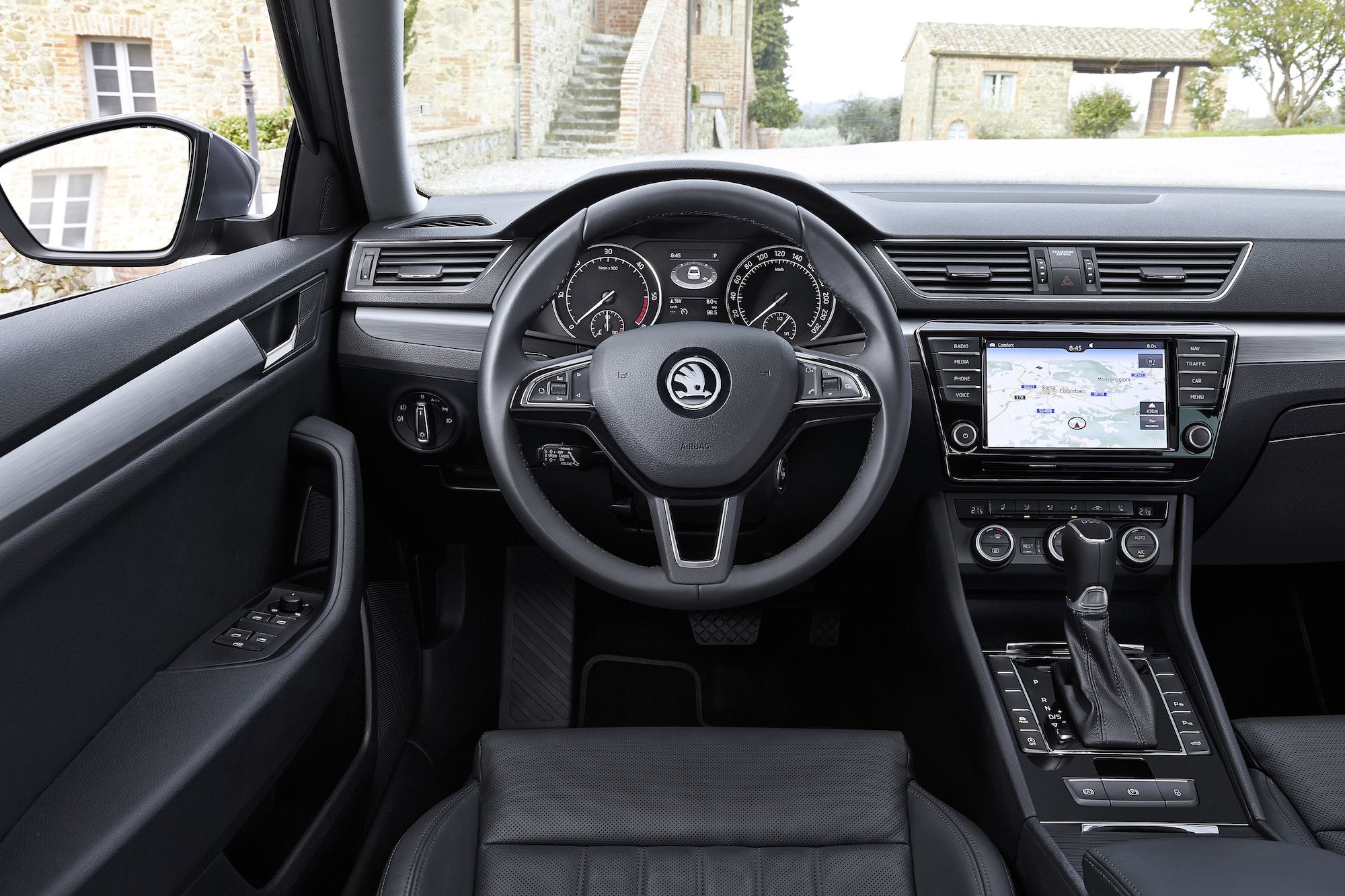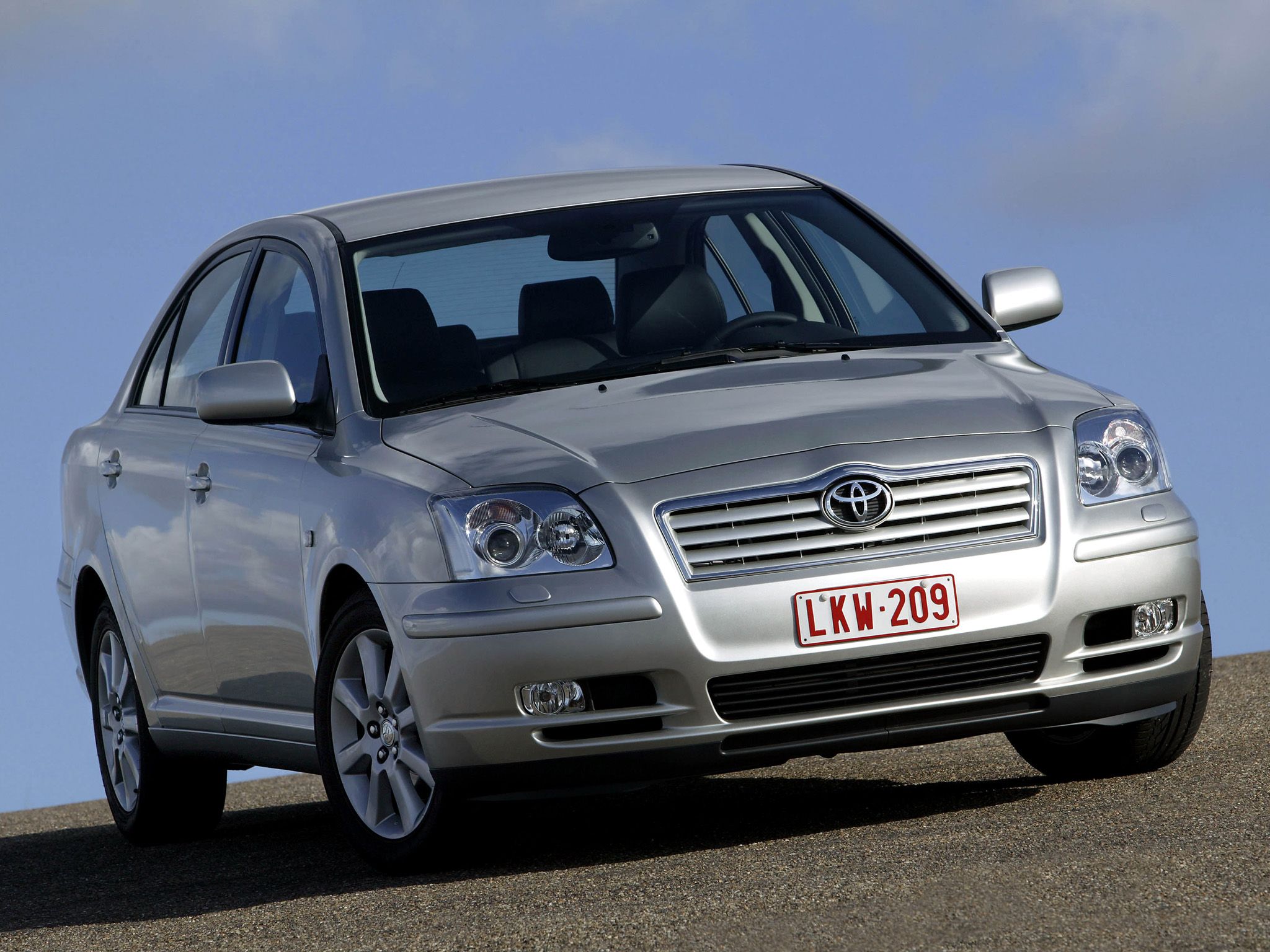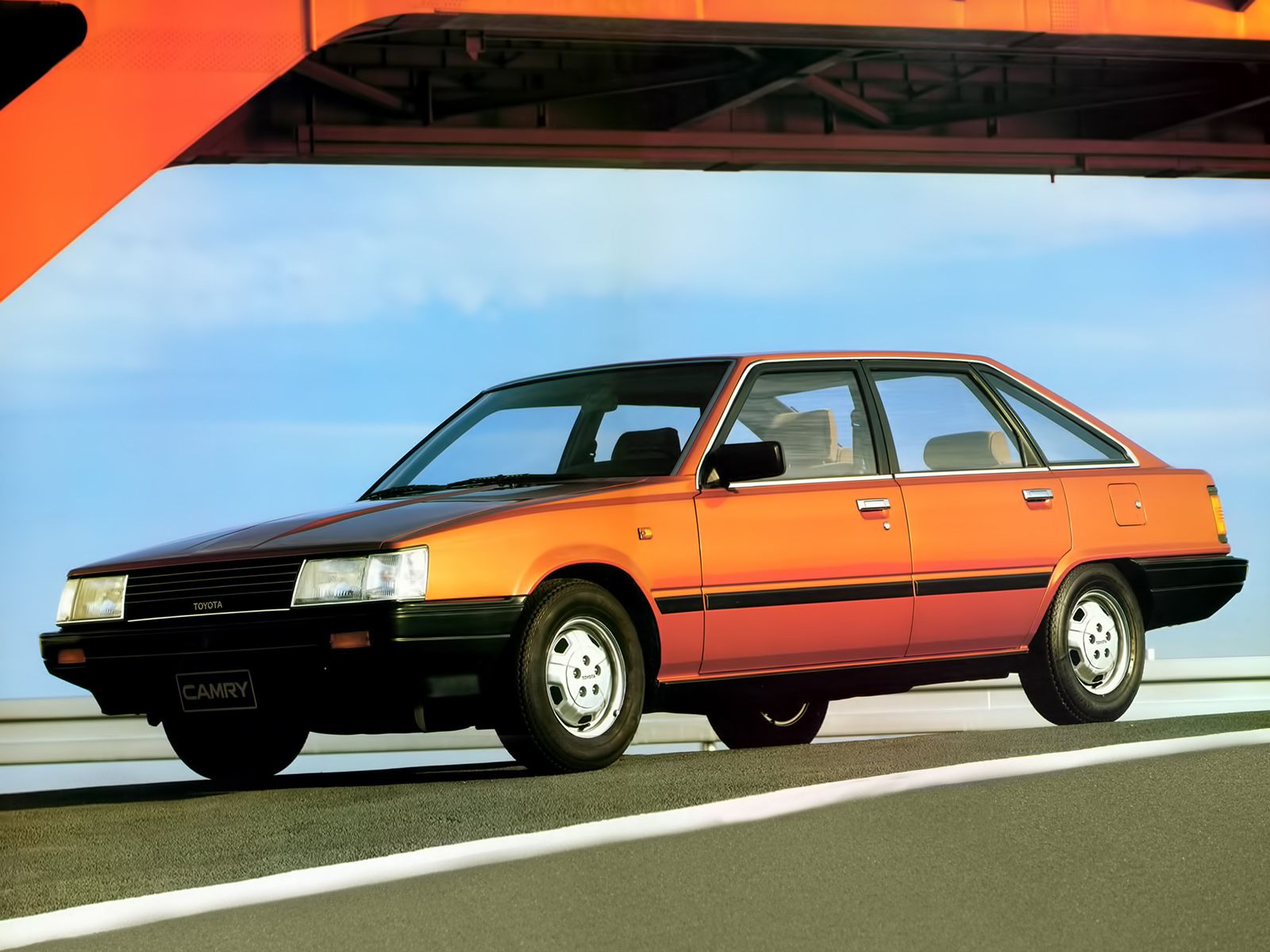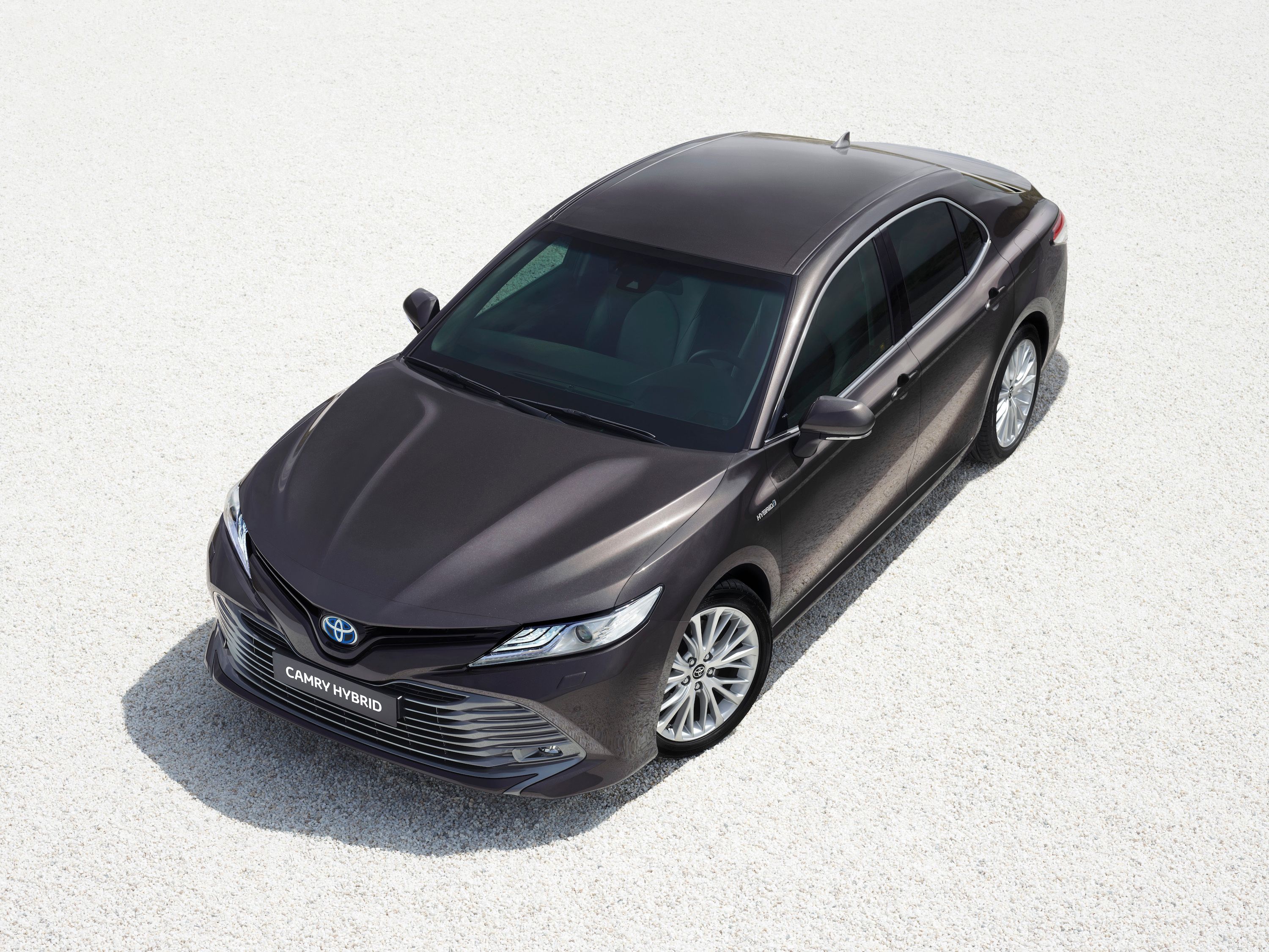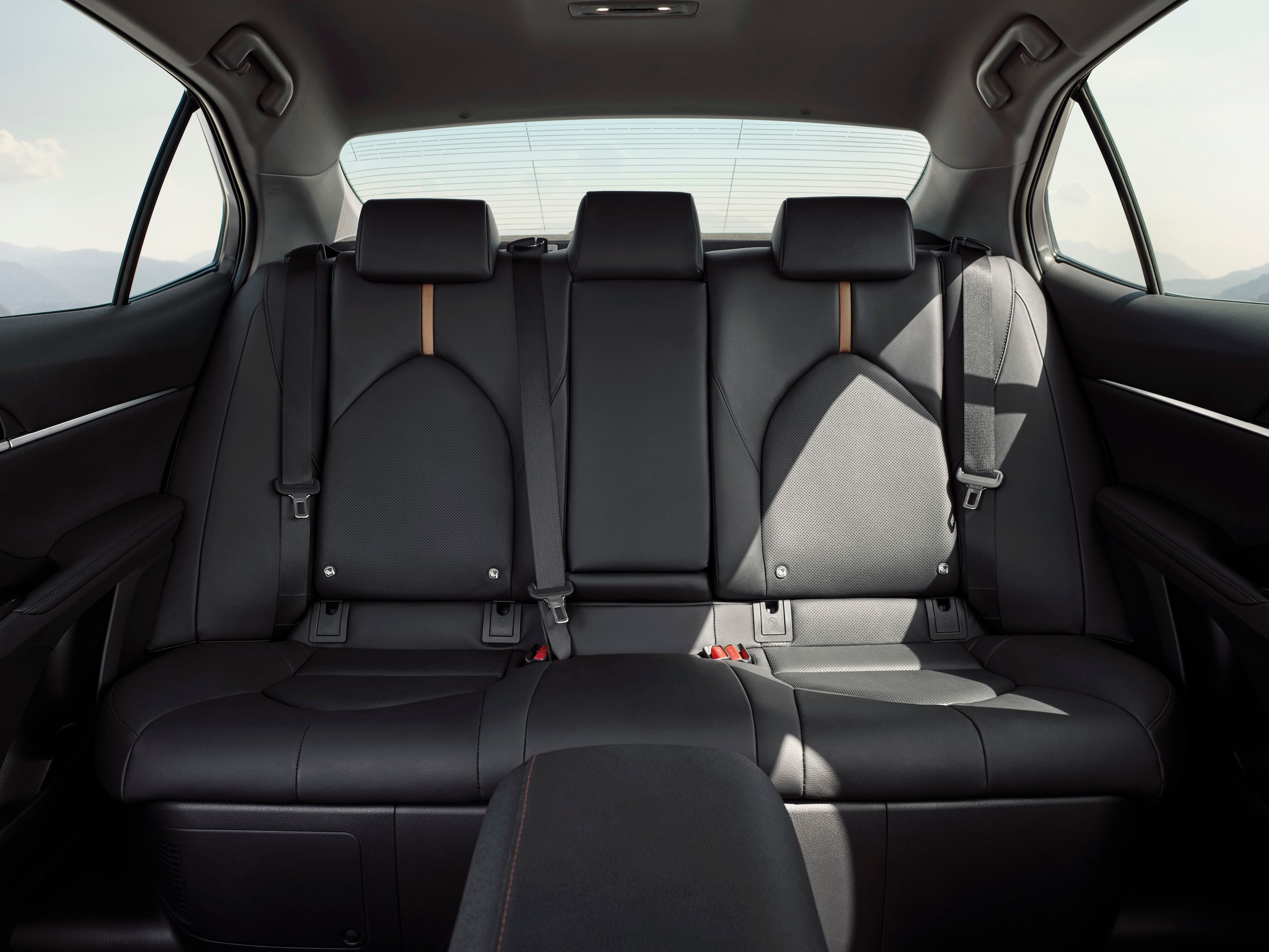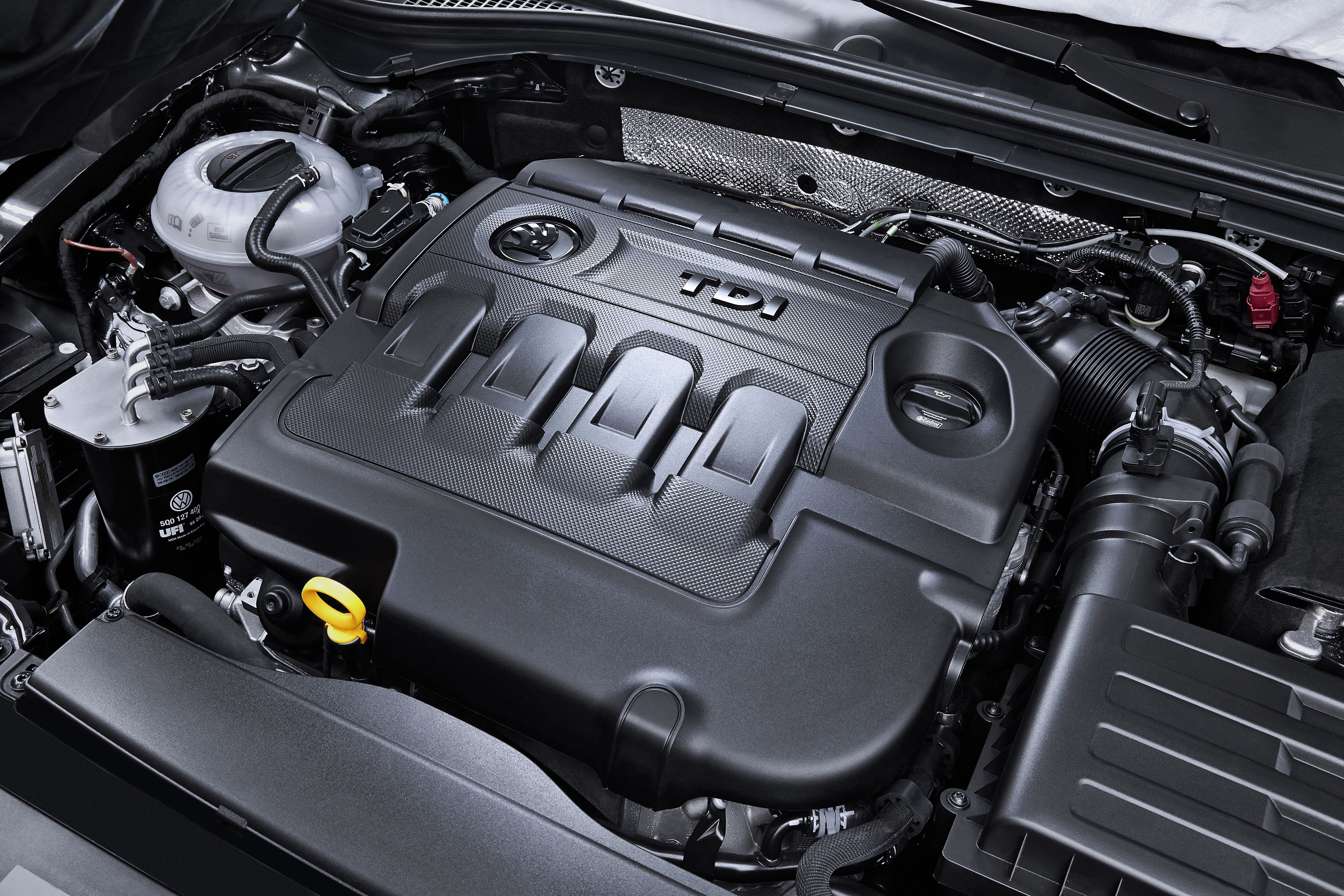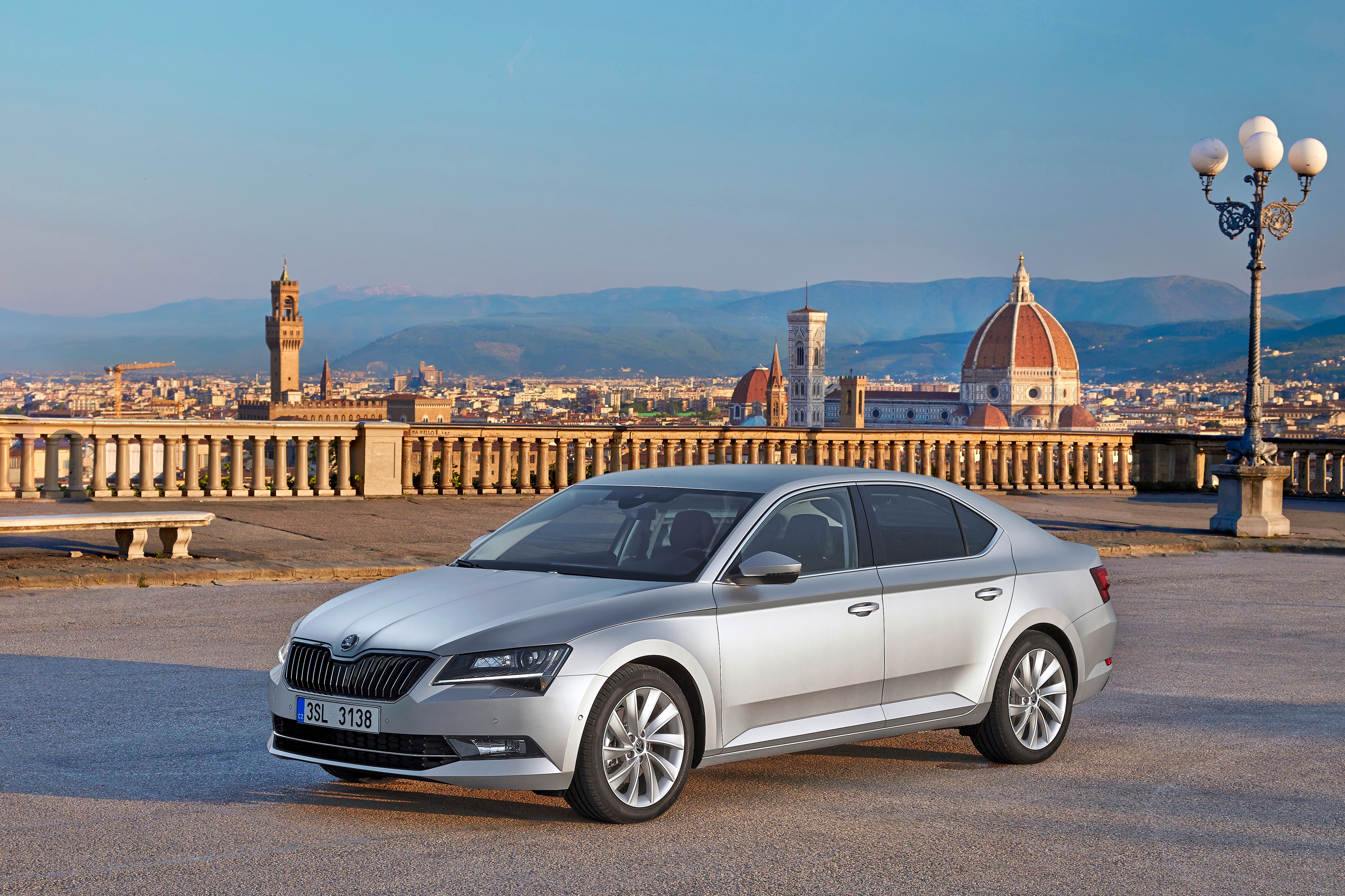The Toyota Camry is available in Europe for the first time in decades, sold as a luxury sedan that undercuts the usual luxury sedan suspects on price. The model is a firm favorite not only in America, but also in Russia, yet it has not been available for European buyers who where offered the Avensis sedan instead.
Now that the Avensis was phased out in mid-2018, there is space in Toyota’s Euro range for a large-ish sedan and the global Camry seems like a perfect fit. It is bigger and more expensive than the Avensis, though, and it will not really face off against the Ford Mondeos and VW Passats, but instead a different car that’s very similar to it in terms of formula: the very talented and much loved Skoda Superb, a car that offers the space of a limousine and almost limo-like levels of luxury for a fraction of what an equivalent premium car of the same size would cost.
The Superb is definitely the Camry’s biggest European rival, and once buyers do get accustomed to the Camry being available, these two models will undeniably be cross-shopped. The only problem is the Camry is only sold as a hybrid in Europe and it can’t really compete with the strong powertrain lineup of the Superb - the big Czech sedan even gained a plug-in hybrid version along with the recent mid lifecycle refresh.
Why did Toyota pull the plug on the Avensis in Europe?
The Toyota Avensis is a common sight and an established nameplate among Old Continent sedans (and wagons). Toyota sold the Avensis in Europe from October 1997 until August 2018 and the car was exclusively built in Toyota’s UK manufacturing facility located in Burnaston, Derbyshire.
The main reason why Toyota decided it wasn’t worth keeping the Avensis in production has everything to do with how well the vehicle was performing from a sales standpoint. The top sales year for the Avensis was 2004, when a total of 142,535 units were sold (in the same year Ford sold 183,357 Mondeos and Peugeot sold 104,610 407s - the Avensis therefore was in the middle of the pack). Compare the 2004 sales figure to 2017 when just 25,000 were sold and you have a pretty clear picture why it’s no longer on sale.
Its decline can’t be attributed to it being a bad car - it was never considered bad and, in fact, many people still praise the Avensis to this day for its comfort, reliability and durability, regardless of which of its three generations we’re referring to. It is just another casualty of the growing popularity of crossovers which have exploded onto the automotive scene over the last decade.
What’s the Toyota Camry’s European history?
The last Camry-badged Toyota to be sold throughout Europe was the first generation Camry (the V10, manufactured between 1982 and 1986). The next generation of the model, the V20, was only sold in Japan, North America, and Australia and this set the trend for the next few decades.
Then, over the years and subsequent generations, the Camry was also introduced in Europe, but it never really made much of a splash. This while in the Middle East and even the eastern fringes of Europe (Ukraine, Republic of Moldova, and Russia) it proved far more popular. It was eventually completely discontinued for mainland Europe some 15 years ago and its place was taken by the Avensis.
The reason why Toyota stopped selling the Camry on mainland Europe was the fact that it developed the Avensis specifically for European tastes and if Euro buyers wanted a bigger and fancier Toyota sedan, they were directed to a Lexus showroom. But now the Avensis is no more and it is the perfect time for reintroduction.
Why is Toyota selling the Camry in Europe now?
Well, it is much more convenient for Toyota to just sell one of its more global cars in Europe, instead of having to develop and manufacture one specifically for this market. The sedan segment is shrinking and being taken over by crossovers, so if Toyota’s bosses decide there is no need to keep developing a sedan specifically for Europe, importing the global Camry seems like a logical step.
Other manufacturers such as Ford are doing this too - the North American Fusion sedan is sold as the Mondeo in Europe. Premium manufacturers have been at it for years, selling basically the same car across the world with minor variations from market to market - it seems that the age of developing specific cars for specific markets is ending (unless we’re talking about China, but that’s a story for another time).
Does the Toyota Camry have what it takes to steal buyers from the established (and recently refreshed) Skoda Superb?
Exterior
Toyota has revolutionized how its Camry sedan is perceived by making the latest model far more rakish and sporty looking than the car it replaced. The previous generation Camry was never a bad looking car, but it was a bit bland and its styling didn’t suggest it was anything special to drive. This new one is a game changer with bold flanks, an even bolder face and a side profile that is much closer to a four-door coupe than we previously thought Toyota would dare go. Sadly, the Hybrid version (the only version to be sold in Europe) looks nowhere near as sporty as the dressed up Camry TRD available in the States.
Even so, it’s far more interesting to look at from all angles and even its big front grille doesn’t look out of place. The Camry certainly pulls off the big grille look better than the larger Avalon sedan whose grille does look like it’s disproportionately large compared to the rest of its front fascia.
|
|
ids=845398,845397> |
By contrast, the revised Skoda Superb looks restrained and very Germanic. Maybe even more so after the recent facelift. Its new headlights make it look a bit fancier and more prestigious than the Toyota (more like a premium car). There is a chance it might be confused with an Audi A6 and that can be seen as both good or bad, depending on your expectations.
The Superb has good proportions, it looks stately and with its sharp, chiseled lines, it looks perhaps a bit more modern than the Camry whose more swooping lines might date it quicker. There is less chance of the Skoda’s design offending in a decade or more, while the current Camry might just look ridiculous in in the same time frame.
Overall, the Camry is the more striking car to look at, it has more voluptuous shapes than the sharp-edged Superb and a sportier, more aggressive look overall. It would have decisively turned the tide in its favor had Toyota offered the Camry TRD (or at least a visual pack that mimics it) in Europe, but even as things stand (Toyota only sells the Hybrid Camry in Europe), the Toyota still comes out as the more distinctive looking vehicle, even if the Skoda just seems that much more premium to look at.
Interior
There is little to complain about regarding the interior of the new Toyota Camry. You are cocooned in a very modern, high quality cabin with design that’s almost as bold as the exterior. There are shapes and edges that define the center console and make its shape quite irregular. But this isn’t bad as it adds character and doesn’t really affect functionality or ergonomics.
Materials are very good too, considerably better than on the old Camry, and the overall interior ambiance is one akin to what you might experience in a Lexus ES. The only letdown has to be the old looking infotainment system that seems to be from a car that’s 10 years old.
Its biggest quality has to be the very high level of comfort it provides for all its occupants. The seats are excellent (and softer, more inviting than on some more premium rivals), as are noise, vibration and harshness levels - this car is excellent at cruising and all those on board will experience it as a relaxing car that wafts along with minimal fuss.
|
|
ids=845400,845399> |
Move into the revised Skoda Superb and you get a completely different feel. The much more Germanic VW-esque feel is prominent throughout. It’s definitely even more modern looking than what you get in the Camry, with a super clean, minimalist layout that does without superfluous touches. The infotainment is prominently displayed on the center console, the controls are logically laid out and where you’d expect to find them, plus you can get lower in the driver’s seat than you can in the Toyota and this will enhance the feeling of driver involvement during a spirited drive.
The digital gauge cluster in the Superb is also much better than what you get in the Camry, both in terms of design and functionality. The graphics are excellent (just like they are for the central infotainment screen) and you can change the style of dials shown or enlarge certain screens in order to have the information displayed in front of you, instead of on the central screen.
Both these cars are extremely good at carrying people in the back seat. But which one is roomier? Well, Skoda doesn’t make the exact amount of rear legroom public, but if you’ve ever been in one, you’ll know it feels like it’s from a class above in this respect. The Camry also doesn’t suffer in this respect, and while it doesn’t feel quite as big as the Superb, even very tall passengers will have sufficient room.
Skoda Superb iV Vs Toyota Camry Hybrid Interior Room
|
Toyota Camry |
965.2 mm (38 inches) |
1,389 mm (54.7 inches) |
|---|---|---|
|
Skoda Superb |
980 mm (38.6 inches) |
1,520 mm (59.8 inches) |
Skoda says the Superb has 980 millimeters (38.6 inches) of rear headroom and 1,520 millimeters (59.8 inches) of rear hip room. Toyota says the Camry (without the moonroof) has 965.2 millimeters (38 inches) of headroom in the rear and 1,389 millimeters (54.7 inches) hip room - it also says there are 38 inches of rear legroom, but since Skoda doesn’t make these numbers public we can’t compare them. But even without numbers, even a visual comparison confirms there is clearly more room (in any direction) in the back of the limo-like Superb.
Powertrains
Since the Toyota Camry is sold in Europe only in hybrid guise, I’ll compare it only to the Skoda Superb iV plug-in hybrid because it’s these specific models that are likely to be cross-shopped.
Toyota has been making hybrids for decades and it has been getting better and better at it, the proof being just how fast, smooth and efficient the latest Camry Hybrid is. It relies on a 2.5-liter engine that in conjunction with an electric motor makes 218 horsepower - it’s the same system we’ve already seen in the RAV4 Hybrid, but in the case of the Camry, it can propel the car from naught to 100 km/h (62 mph) in 8.3 seconds and on to a top speed of 180 km/h (112 mph).
Since it is a hybrid, efficiency and cleanliness are top priorities and, in this respect, the the Camry Hybrid doesn’t disappoint. It returns a claimed 4.3 l/100km and emits 119 g/Km CO2, according to the latest WLTP guidelines. And while the exact claimed figure is difficult to achieve in the real world, unless you have a feather for a right foot, you should still achieve under 6 l/100km in real world driving conditions, maybe a bit better if you really try to drive efficiently.
The Skoda Superb iV has a slight upper hand over the Camry Hybrid because it is a PHEV. That means it has a bigger battery which can be charged separately, it provides usable electric-only range and it therefore can be used as a pure-electric vehicle if you keep it topped up, while the Camry handles charging the battery itself, often to the detriment of fuel economy.
|
Camry Hybrid |
218 |
8.2 seconds |
|---|---|---|
|
Superb iV |
214 |
TBA |
The Superb iV mates a VW-sourced 1.4-liter TSI turbo four-cylinder with 154 horsepower to an electric motor for a combined total output of 214 horsepower. Unlike the Camry Hybrid, which relies on a smooth but not very exciting sounding continuously variable transmission (CVT), the Superb iV has a traditional six-speed automatic gearbox. Its benchmark sprint time has not been announced yet, but it too should be around the 8-second mark, just like the Camry’s.
Skoda says the Superb iV’s 13 kWh battery pack helps it achieve an all-electric range of 55 km (34 miles) and if the battery is topped up, it should emit no more than 40 g/Km CO2.
Out on the road, neither of these two cars is especially sporty to drive, but at the same time neither is bad. The Superb just has the edge here with its sharper steering, tighter body control and slightly peppier powertrain, but in terms of driving dynamics, they’re actually quite well matched.
2019 Toyota Camry Hybrid or 2019 Skoda Superb iV?
Both cars are undeniably talented and both have plus points and downsides. The Toyota has the novelty factor on its side - Camrys are far less common in Europe compared to Superbs and for some buyers, this exclusivity and the promise they will very rarely see another on the road will be the clincher.
The Camry Hybrid is good to drive, supremely quiet and comfortable and pretty quick too. Plus, it’s better and more interesting to look at compared to any Camry that has gone before it, even in the kind of drab Hybrid trim that it’s being sold in in Europe. Had they offered a TRD look package, maybe the car would have been even more enticing, to more types of buyers, some of which do want a car that looks sporty and aggressive (and the current spec of Camry sold in Europe doesn’t quite provide that look).
The Skoda Superb is an established nameplate in Europe. You will see them as taxis in most major European capitals - it is not quite as popular for taxi duty as a Mercedes E-Class, but it’s closer than you might think. And these cars are popular as taxis specifically because of the ridiculous levels of space they provide for rear seat occupants.
The latest Superb, now available as the plug-in hybrid Superb iV, builds on those familiar Superb qualities and ups the luxury, improves the design and the green credentials of the range. It offers a superb limo-like experience for those in the back not only in terms of the space provided, but also thanks to the excellent fit and finish it provides. Its tech levels are also better than the Camry, its infotainment and digital gauge cluster are too and it’s just going to be a really tough nut to crack for Toyota.
So, overall, I think the Camry Hybrid has its work cut out in Europe where it not only faces the Skoda Superb iV (and the rest of the Superb lineup, with its wide array of available engines), but it also faces the recently facelifted and undeniably talented VW Passat, but also the Ford Mondeo, Mazda6 and also premium sedans on whose territory it encroaches upon in terms of pricing.
Further Reading
Read our full review on the 2018 Toyota Camry.
Read our full review on the 2018 Toyota Camry XSE Denny Hamlin Edition.

